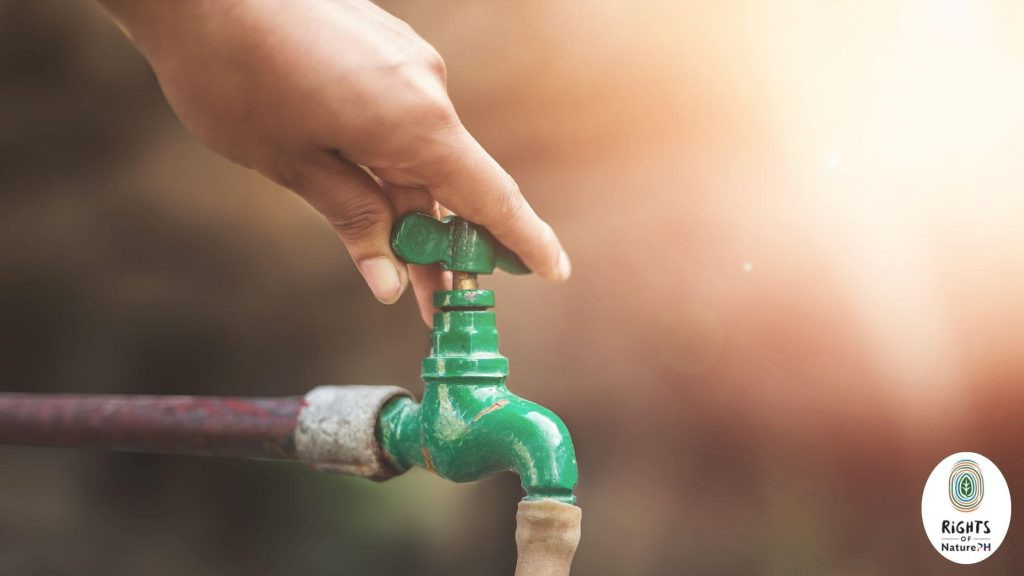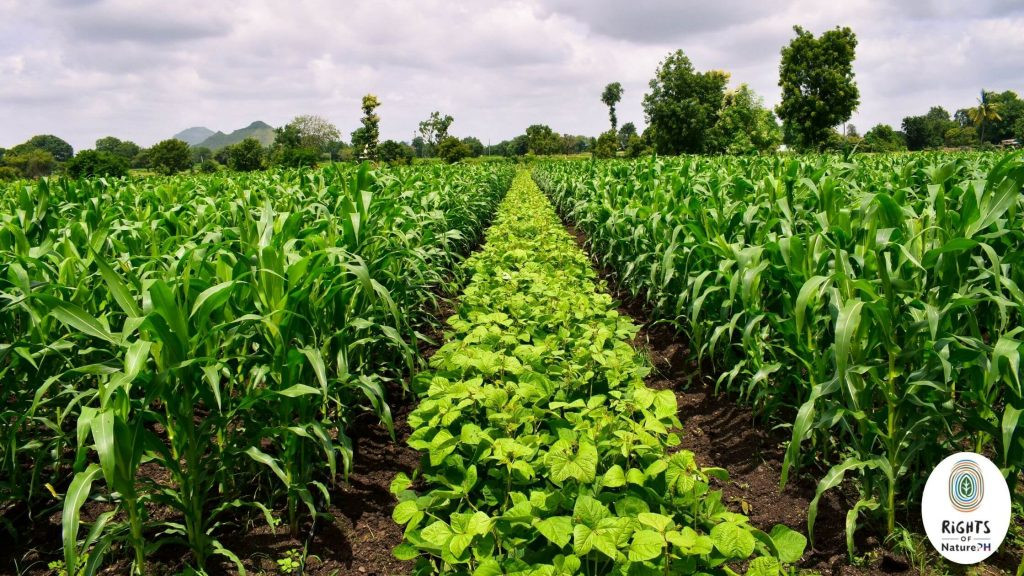Are you wondering How Can We Save Natural Resources and reduce our environmental impact? At savewhere.net, we believe that conserving our planet’s precious resources is not just a responsibility, but an opportunity to create a sustainable and thriving future for generations to come. Let’s explore practical and impactful ways to protect our natural heritage, promoting environmental stewardship and adopting sustainable habits.
1. Understanding Natural Resources and Their Importance
What exactly are natural resources, and why is their conservation so vital?
Natural resources are materials or substances occurring in nature which can be exploited for economic gain. They include minerals, forests, water, and fertile land. Conserving these resources is essential because they are the foundation of our survival and the health of our planet. Without them, we face significant challenges such as resource depletion, ecological imbalance, and economic instability.
1.1. Renewable vs. Non-Renewable Resources
Can you explain the difference between renewable and non-renewable resources, and how does this distinction impact our conservation efforts?
Renewable resources, such as solar energy, wind, and water, can be replenished naturally over time. Non-renewable resources, like fossil fuels and minerals, have a finite supply and cannot be easily replaced. This distinction is crucial because our reliance on non-renewable resources leads to depletion and environmental damage. By shifting towards renewable energy sources and practicing responsible consumption, we can minimize our impact on the environment and ensure a sustainable future. According to the U.S. Energy Information Administration (EIA), renewable energy sources are projected to grow significantly in the coming decades.
1.2. The Philippines: A Case Study in Natural Resource Management
What natural resources are abundant in the Philippines, and how can the country better manage these resources sustainably?
The Philippines, an archipelago with over 7,000 islands, is rich in biodiversity and natural resources, including fertile land, marine resources, and mineral deposits. Sustainable management of these resources involves practices such as responsible mining, reforestation, and marine conservation. The Philippine government has been promoting renewable energy sources and implementing environmental protection laws to address these challenges. Organizations like the Rights of Nature are also actively involved in advocating for the protection of the country’s natural resources.
 natural resources of the Philippines
natural resources of the Philippines
1.3. The Impact of Overexploitation
What are the consequences of overexploiting natural resources, and how does it affect communities and ecosystems?
Overexploitation of natural resources leads to deforestation, soil erosion, water scarcity, and loss of biodiversity. These issues disproportionately affect vulnerable communities that depend directly on these resources for their livelihoods. Ecosystems suffer from habitat destruction and disruption of ecological balance. For example, illegal logging can lead to soil erosion and flooding, impacting agricultural productivity and water quality. Addressing these issues requires a multi-faceted approach involving government regulation, community involvement, and sustainable practices.
2. Practical Steps to Conserve Natural Resources at Home
How can individuals make a difference in conserving natural resources through simple changes in their daily routines?
Individuals can significantly contribute to natural resource conservation by adopting eco-friendly habits at home. These include reducing energy consumption, conserving water, practicing recycling, and choosing sustainable products. Small changes in our daily routines can collectively lead to a substantial positive impact on the environment.
2.1. Water Conservation Tips
What are some easy-to-implement tips for conserving water at home, and how much water can these practices save?
Conserving water at home is simple and effective. Here are a few tips:
- Fix leaky faucets: A small drip can waste gallons of water over time.
- Take shorter showers: Reducing shower time by a few minutes can save a significant amount of water.
- Use water-efficient appliances: Look for appliances with the WaterSense label.
- Water your lawn efficiently: Water early in the morning or late in the evening to reduce evaporation.
According to the Environmental Protection Agency (EPA), these practices can save thousands of gallons of water per household each year, leading to lower water bills and a reduced strain on local water resources.
 turn off water tap
turn off water tap
2.2. Energy Efficiency Measures
How can homeowners reduce their energy consumption and lower their carbon footprint through energy-efficient upgrades?
Homeowners can reduce energy consumption by:
- Switching to LED lighting: LED bulbs use up to 75% less energy than incandescent bulbs.
- Using energy-efficient appliances: Look for appliances with the Energy Star label.
- Improving insulation: Proper insulation can reduce heating and cooling costs.
- Unplugging electronics: Many devices consume energy even when turned off.
These measures not only lower your carbon footprint but also result in significant cost savings on your energy bills. Meralco estimates that replacing all lights with LED bulbs can save PHP 13 per bulb monthly.
2.3. Recycling and Waste Reduction Strategies
What are effective strategies for recycling and reducing waste, and how can these practices benefit the environment?
Effective recycling and waste reduction strategies include:
- Setting up recycling bins: Segregate trash at home to make recycling easier.
- Reducing single-use plastics: Use reusable bags, bottles, and containers.
- Composting: Compost food scraps and yard waste to reduce landfill waste.
- Buying products with minimal packaging: Choose products with eco-friendly packaging.
By recycling and reducing waste, we can conserve natural resources, reduce pollution, and minimize the amount of waste sent to landfills. According to the EPA, recycling can significantly reduce greenhouse gas emissions and conserve valuable resources.
 recycling as one of the ways to conserve natural resources
recycling as one of the ways to conserve natural resources
3. Sustainable Shopping and Consumption Habits
How can consumers make more sustainable choices when shopping, and how do these choices impact natural resource conservation?
Consumers can support natural resource conservation by making informed and sustainable shopping choices. This includes buying products with eco-friendly packaging, supporting companies committed to sustainability, and reducing overall consumption. By voting with our wallets, we can drive demand for sustainable products and practices.
3.1. Choosing Eco-Friendly Products
What factors should consumers consider when selecting eco-friendly products, and how can they identify truly sustainable options?
When selecting eco-friendly products, consider the following factors:
- Materials: Look for products made from recycled or renewable materials.
- Packaging: Choose products with minimal or recyclable packaging.
- Certifications: Look for certifications like Energy Star, WaterSense, and Forest Stewardship Council (FSC).
- Company ethics: Support companies committed to ethical and sustainable practices.
Identifying truly sustainable options requires research and awareness, but it’s a crucial step towards responsible consumption.
3.2. Supporting Sustainable Businesses
Why is it important to support businesses that prioritize sustainability, and how can consumers find these businesses?
Supporting sustainable businesses encourages responsible environmental practices and drives innovation in eco-friendly products and services. Consumers can find these businesses by:
- Researching company practices: Look for companies with transparent sustainability initiatives.
- Reading reviews and ratings: Check for customer feedback on a company’s environmental efforts.
- Looking for certifications: Support businesses with recognized sustainability certifications.
- Checking savewhere.net for sustainable deals.
By supporting these businesses, we contribute to a more sustainable and ethical economy.
3.3. Reducing Meat Consumption
How does reducing meat consumption contribute to natural resource conservation, and what are some practical ways to incorporate more plant-based meals into our diets?
Reducing meat consumption can significantly lower your carbon footprint and conserve natural resources. The livestock industry is a major contributor to greenhouse gas emissions, deforestation, and water pollution. Incorporating more plant-based meals into your diet can be done by:
- Trying meatless Mondays: Start with one day a week without meat.
- Exploring vegetarian recipes: Discover delicious and nutritious plant-based meals.
- Substituting meat with plant-based proteins: Use lentils, beans, tofu, or tempeh.
- Eating less processed foods: Choose more real, plant-based food
By making these changes, you can reduce your environmental impact and improve your health.
 eat less meat less heat
eat less meat less heat
4. Community Involvement and Education
How can individuals get involved in community initiatives and educate others about natural resource conservation?
Community involvement and education are essential for raising awareness and promoting collective action towards natural resource conservation. By participating in local initiatives and sharing knowledge, individuals can inspire others to adopt sustainable practices.
4.1. Participating in Local Conservation Efforts
What types of local conservation efforts can individuals participate in, and how can they find these opportunities?
Individuals can participate in various local conservation efforts, such as:
- Clean-up drives: Join community clean-up events to remove litter and pollutants.
- Tree planting: Volunteer to plant trees and support reforestation efforts.
- Recycling programs: Participate in local recycling initiatives and promote waste reduction.
- Environmental education programs: Help educate others about environmental issues and conservation practices.
These opportunities can often be found through local environmental organizations, community centers, and government agencies.
4.2. Educating Friends and Family
What are effective ways to educate friends and family about natural resource conservation, and how can individuals inspire them to take action?
Educating friends and family about natural resource conservation can be done through:
- Sharing information: Share articles, videos, and resources about environmental issues and conservation practices.
- Leading by example: Demonstrate sustainable practices in your own life and inspire others to follow suit.
- Organizing discussions: Host informal discussions about environmental topics and encourage open dialogue.
- Involving them in activities: Invite friends and family to participate in conservation activities and community events.
By making conservation relatable and engaging, you can inspire others to take meaningful action.
4.3. Supporting Environmental Organizations
Why is it important to support environmental organizations, and how can individuals contribute to their missions?
Supporting environmental organizations provides crucial resources for research, advocacy, and conservation efforts. Individuals can contribute by:
- Donating: Make financial contributions to support their work.
- Volunteering: Offer your time and skills to assist with their projects.
- Advocating: Support their policy initiatives and raise awareness about their causes.
- Spreading the word: Share their mission and activities with your network.
By supporting these organizations, we amplify our collective impact and contribute to a more sustainable future. Organizations like Rights of Nature offer volunteer opportunities for those interested in environmental conservation.
 children holding posters of rights of nature
children holding posters of rights of nature
5. Sustainable Transportation Choices
How can individuals reduce their reliance on cars and adopt more sustainable transportation options?
Sustainable transportation choices can significantly reduce greenhouse gas emissions and conserve fossil fuels. By opting for alternative modes of transportation, individuals can minimize their environmental impact and promote a healthier planet.
5.1. Walking and Biking
What are the benefits of walking and biking for short distances, and how can individuals make these options more convenient?
Walking and biking offer numerous benefits, including:
- Reduced emissions: They produce zero emissions, contributing to cleaner air.
- Improved health: They provide physical exercise and promote overall well-being.
- Cost savings: They eliminate the need for fuel and parking.
- Reduced traffic: They help alleviate traffic congestion and reduce commute times.
To make these options more convenient, individuals can invest in comfortable walking shoes, use bike-sharing programs, and advocate for safer biking and walking infrastructure in their communities.
 cycling
cycling
5.2. Public Transportation
Why is using public transportation a more sustainable option than driving alone, and how can individuals make the most of public transit systems?
Using public transportation is more sustainable because it:
- Reduces emissions: It transports more people with fewer vehicles, lowering overall emissions.
- Conserves energy: It requires less energy per passenger compared to individual cars.
- Alleviates traffic: It reduces traffic congestion and commute times.
To make the most of public transit systems, individuals can plan their routes in advance, use public transit apps, and advocate for improvements to public transportation infrastructure.
5.3. Carpooling and Ride-Sharing
How does carpooling and ride-sharing contribute to natural resource conservation, and what are some tips for organizing carpools effectively?
Carpooling and ride-sharing contribute to natural resource conservation by:
- Reducing emissions: They decrease the number of vehicles on the road, lowering overall emissions.
- Conserving fuel: They reduce fuel consumption and reliance on fossil fuels.
- Alleviating traffic: They help alleviate traffic congestion and reduce commute times.
To organize carpools effectively, individuals can use carpooling apps, establish clear communication with carpool members, and create a rotating schedule for driving responsibilities.
6. Sustainable Land Use and Agriculture
How can sustainable land use and agricultural practices contribute to natural resource conservation?
Sustainable land use and agricultural practices are essential for preserving soil health, conserving water, and protecting biodiversity. By adopting these practices, we can ensure the long-term productivity of our land and resources.
6.1. Reforestation and Afforestation
What is the difference between reforestation and afforestation, and how do these practices benefit the environment?
Reforestation involves replanting trees in areas that were previously forested, while afforestation involves planting trees in areas that were not previously forested. Both practices benefit the environment by:
- Absorbing carbon dioxide: Trees absorb CO2 from the atmosphere, helping to mitigate climate change.
- Improving air quality: Trees filter pollutants from the air, improving air quality.
- Preventing soil erosion: Tree roots help stabilize soil and prevent erosion.
- Providing habitat: Forests provide habitat for wildlife and support biodiversity.
Supporting reforestation and afforestation efforts is crucial for restoring degraded ecosystems and promoting a healthier planet.
6.2. Sustainable Farming Techniques
What are some sustainable farming techniques, and how do they promote soil health and biodiversity?
Sustainable farming techniques include:
- Crop rotation: Rotating crops can improve soil fertility and reduce pest infestations.
- Cover cropping: Planting cover crops can prevent soil erosion and improve soil health.
- No-till farming: Minimizing soil disturbance can conserve soil moisture and reduce erosion.
- Organic farming: Using organic fertilizers and pest control methods can promote soil health and biodiversity.
These techniques promote soil health, conserve water, and support biodiversity, leading to more resilient and productive agricultural systems.
 sustainable farming by crop rotation
sustainable farming by crop rotation
6.3. Reducing Food Waste
Why is reducing food waste important for natural resource conservation, and what are some practical ways to minimize food waste at home?
Reducing food waste is crucial for natural resource conservation because it:
- Conserves water: Producing food requires significant amounts of water, so reducing waste conserves water resources.
- Reduces emissions: Decomposing food in landfills releases methane, a potent greenhouse gas.
- Saves energy: Reducing food waste minimizes the energy needed for food production, transportation, and disposal.
Practical ways to minimize food waste at home include:
- Planning meals: Plan your meals in advance and buy only what you need.
- Storing food properly: Store food correctly to extend its shelf life.
- Using leftovers: Use leftovers creatively to create new meals.
- Composting: Compost food scraps and yard waste to reduce landfill waste.
By reducing food waste, we can conserve valuable resources and minimize our environmental impact.
7. Advocating for Policy Changes
How can individuals advocate for policy changes that support natural resource conservation?
Advocating for policy changes is essential for creating a supportive framework for natural resource conservation. By engaging with policymakers and supporting environmental legislation, individuals can drive systemic change and promote a more sustainable future.
7.1. Contacting Elected Officials
Why is it important to contact elected officials about environmental issues, and what are some effective strategies for communicating with them?
Contacting elected officials is important because it:
- Raises awareness: It brings environmental issues to their attention and encourages them to take action.
- Influences policy: It influences their voting decisions and supports the passage of environmental legislation.
- Holds them accountable: It holds them accountable for their environmental records and encourages them to prioritize conservation efforts.
Effective strategies for communicating with elected officials include:
- Writing letters: Write letters expressing your concerns and urging them to support specific policies.
- Making phone calls: Call their offices and speak with their staff about environmental issues.
- Attending town hall meetings: Attend town hall meetings and ask them questions about their environmental positions.
- Using social media: Use social media to engage with them and share your concerns with a wider audience.
7.2. Supporting Environmental Legislation
How can individuals support environmental legislation at the local, state, and national levels?
Individuals can support environmental legislation by:
- Researching bills: Research proposed environmental bills and understand their potential impacts.
- Contacting legislators: Contact your legislators and urge them to support or oppose specific bills.
- Signing petitions: Sign petitions in support of environmental legislation.
- Voting: Vote for candidates who support environmental protection and conservation.
By actively engaging in the legislative process, you can help shape environmental policy and promote a more sustainable future.
7.3. Participating in Public Hearings
What is the purpose of public hearings, and how can individuals participate effectively in these forums?
Public hearings provide a forum for individuals to share their perspectives and influence policy decisions. Individuals can participate effectively by:
- Preparing testimony: Prepare written or oral testimony to present at the hearing.
- Presenting evidence: Present evidence and data to support your arguments.
- Speaking clearly and concisely: Speak clearly and concisely and stay within the allotted time.
- Following up: Follow up with policymakers after the hearing to reinforce your message and advocate for your position.
By participating in public hearings, you can ensure that your voice is heard and contribute to informed policy decisions.
8. Embracing Minimalism and Conscious Consumption
How does embracing minimalism and conscious consumption contribute to natural resource conservation?
Embracing minimalism and conscious consumption reduces our overall demand for goods and services, leading to lower resource consumption, reduced waste, and a smaller environmental footprint. By prioritizing quality over quantity and making more deliberate purchasing decisions, we can minimize our impact on the planet.
8.1. Decluttering and Reducing Possessions
What are the benefits of decluttering and reducing possessions, and how can individuals get started with this process?
Decluttering and reducing possessions offer numerous benefits, including:
- Reduced consumption: It encourages you to buy less and use what you already have.
- Less waste: It minimizes the amount of stuff that ends up in landfills.
- Greater simplicity: It simplifies your life and reduces stress.
- Increased financial freedom: It frees up money that can be used for other purposes.
To get started with this process, individuals can:
- Set goals: Set specific goals for decluttering and reducing possessions.
- Start small: Start with one room or one category of items at a time.
- Donate or sell unwanted items: Donate or sell items that are still in good condition.
- Avoid impulse purchases: Be mindful of your spending habits and avoid impulse purchases.
 minimalist house
minimalist house
8.2. Buying Less and Buying Better
Why is it important to buy less and buy better, and how can consumers make more informed purchasing decisions?
Buying less and buying better is important because it:
- Reduces consumption: It minimizes the demand for new products and conserves resources.
- Supports quality: It encourages companies to produce higher-quality, more durable products.
- Reduces waste: It reduces the amount of disposable goods that end up in landfills.
Consumers can make more informed purchasing decisions by:
- Researching products: Research products before buying them and choose durable, eco-friendly options.
- Reading reviews: Read reviews from other consumers to get feedback on product quality and performance.
- Considering secondhand options: Consider buying used or refurbished products instead of new ones.
- Supporting sustainable brands: Support companies that prioritize sustainability and ethical production practices.
8.3. Repairing and Repurposing Items
How does repairing and repurposing items contribute to natural resource conservation, and what are some creative ways to give old items new life?
Repairing and repurposing items contributes to natural resource conservation by:
- Extending product lifecycles: It prolongs the lifespan of products and reduces the need for new ones.
- Conserving resources: It conserves the resources used to manufacture new products.
- Reducing waste: It minimizes the amount of waste that ends up in landfills.
Creative ways to give old items new life include:
- Repairing broken appliances: Repair broken appliances instead of replacing them.
- Repurposing old clothing: Turn old clothing into new items like bags, quilts, or cleaning rags.
- Upcycling furniture: Refurbish old furniture with new paint, fabric, or hardware.
- Reusing containers: Reuse jars, bottles, and containers for storage or other purposes.
By repairing and repurposing items, we can reduce our environmental impact and embrace a more sustainable lifestyle.
9. Investing in Renewable Energy
How can investing in renewable energy contribute to natural resource conservation and a cleaner environment?
Investing in renewable energy reduces our reliance on fossil fuels, leading to lower greenhouse gas emissions, improved air quality, and a more sustainable energy future. By supporting renewable energy projects and adopting renewable energy technologies, individuals and communities can drive the transition to a cleaner, more sustainable energy system.
9.1. Solar Panels
What are the benefits of installing solar panels, and how can homeowners determine if solar energy is a viable option for their homes?
Installing solar panels offers numerous benefits, including:
- Reduced energy costs: Solar panels can significantly reduce or eliminate your electricity bill.
- Lower carbon footprint: Solar energy is a clean, renewable energy source that produces zero emissions.
- Increased home value: Solar panels can increase the value of your home.
- Energy independence: Solar panels allow you to generate your own electricity and reduce your reliance on the grid.
To determine if solar energy is a viable option for your home, homeowners can:
- Assess their energy consumption: Analyze your electricity bills to determine your energy needs.
- Evaluate their roof: Evaluate your roof’s size, orientation, and shading to determine its suitability for solar panels.
- Get quotes: Get quotes from multiple solar installers to compare costs and options.
- Consider incentives: Consider available tax credits, rebates, and other incentives that can reduce the cost of solar panels.
 solar panels on top of roof
solar panels on top of roof
9.2. Wind Energy
What are the advantages of wind energy, and how can communities support the development of wind farms?
Wind energy offers several advantages, including:
- Clean energy: Wind energy is a clean, renewable energy source that produces zero emissions.
- Abundant resource: Wind is an abundant and widely available resource.
- Job creation: Wind energy projects can create jobs in manufacturing, construction, and maintenance.
- Economic development: Wind energy can boost local economies and provide income for landowners.
Communities can support the development of wind farms by:
- Educating themselves: Learn about the benefits of wind energy and address any concerns about potential impacts.
- Supporting local projects: Support local wind energy projects and encourage their development.
- Advocating for policies: Advocate for policies that support wind energy and renewable energy development.
- Investing in wind energy: Invest in wind energy projects or purchase electricity from wind energy providers.
9.3. Other Renewable Energy Sources
What are some other renewable energy sources, such as geothermal and hydropower, and how can they contribute to a sustainable energy mix?
Other renewable energy sources include:
- Geothermal energy: Geothermal energy harnesses heat from the Earth’s interior to generate electricity or heat buildings.
- Hydropower: Hydropower uses the energy of flowing water to generate electricity.
- Biomass energy: Biomass energy uses organic matter, such as wood, crops, and waste, to generate electricity or heat.
These renewable energy sources can contribute to a sustainable energy mix by:
- Diversifying energy sources: They provide alternatives to fossil fuels and reduce reliance on a single energy source.
- Reducing emissions: They produce lower emissions than fossil fuels, helping to mitigate climate change.
- Supporting local economies: They can create jobs and boost local economies.
By diversifying our energy sources and embracing renewable energy technologies, we can create a more sustainable and resilient energy system.
10. Staying Informed and Engaged
How can individuals stay informed and engaged about natural resource conservation issues?
Staying informed and engaged is essential for effective advocacy and action. By seeking out reliable information, participating in discussions, and supporting environmental causes, individuals can remain informed and motivated to make a difference.
10.1. Following Environmental News and Research
Why is it important to follow environmental news and research, and what are some reliable sources of information?
Following environmental news and research is important because it:
- Raises awareness: It keeps you informed about the latest environmental issues and challenges.
- Provides knowledge: It provides the knowledge and information you need to make informed decisions.
- Promotes action: It inspires you to take action and advocate for environmental protection.
Reliable sources of information include:
- Scientific journals: Peer-reviewed scientific journals publish research on environmental issues.
- Government agencies: Government agencies like the EPA and the U.S. Geological Survey provide data and information on environmental issues.
- Environmental organizations: Environmental organizations like the Sierra Club and the Nature Conservancy publish news and reports on environmental issues.
- Reputable news outlets: Reputable news outlets provide coverage of environmental issues and policy debates.
10.2. Participating in Discussions and Forums
How can participating in discussions and forums contribute to a better understanding of environmental issues?
Participating in discussions and forums allows you to:
- Share ideas: Share your ideas and perspectives with others.
- Learn from others: Learn from the experiences and insights of others.
- Build community: Connect with like-minded individuals and build a community of support.
- Influence opinions: Influence the opinions and attitudes of others.
Online forums, community meetings, and public hearings provide opportunities to engage in discussions and contribute to a better understanding of environmental issues.
10.3. Supporting Environmental Education
Why is supporting environmental education important, and how can individuals contribute to these efforts?
Supporting environmental education is crucial because it:
- Raises awareness: It raises awareness about environmental issues among students and the general public.
- Provides knowledge: It provides the knowledge and skills needed to address environmental challenges.
- Promotes action: It inspires individuals to take action and advocate for environmental protection.
Individuals can contribute to environmental education efforts by:
- Volunteering: Volunteer in environmental education programs in schools or community centers.
- Donating: Donate to organizations that support environmental education.
- Advocating: Advocate for environmental education policies in schools and communities.
- Sharing resources: Share environmental education resources with students, teachers, and the public.
By supporting environmental education, we can empower future generations to become responsible stewards of the environment.
FAQs About How Can We Save Natural Resources
How can students conserve natural resources in schools?
Students can conserve natural resources by limiting paper use, segregating trash, avoiding buying bottled water and other single-use plastics, bringing their own water bottles to public spaces, and volunteering for community or school initiatives. They can also help advocate causes by encouraging people to change their habits and make more conscious decisions to preserve the planet. Rights of Nature provides examples of advocacy campaigns for students.
Why should we conserve natural resources?
Natural resources are essential for any living being to survive. You use these resources in practically every aspect of your life, but not all of them come in unlimited supplies. Some can take thousands or millions of years to replenish. As people are consuming resources faster than they can be renewed, there’s a high chance that they’d run out at one point, leading to scarcity, drought, and other environmental disasters for future generations.
Take Action with Savewhere.net
Ready to make a difference? At savewhere.net, we’re committed to providing you with the resources and information you need to conserve natural resources and live more sustainably. Discover valuable tips, special offers, and connect with a community of like-minded individuals in the USA, especially in areas like Atlanta where sustainable living is gaining momentum.
Address: 100 Peachtree St NW, Atlanta, GA 30303, United States
Phone: +1 (404) 656-2000
Website: savewhere.net
Start your journey towards a greener, more sustainable lifestyle today. Explore savewhere.net and join the movement to protect our planet’s precious natural resources.
Conserving natural resources is a collective effort that requires commitment, knowledge, and action. By adopting sustainable practices, advocating for policy changes, and supporting environmental initiatives, we can create a more sustainable and resilient future for ourselves and generations to come. Remember, every small action counts, and together, we can make a significant impact on the health of our planet.

